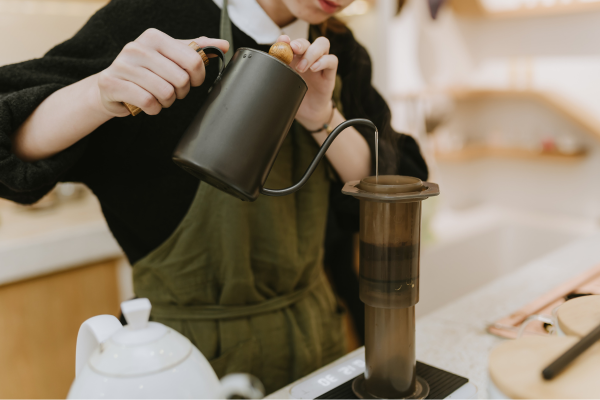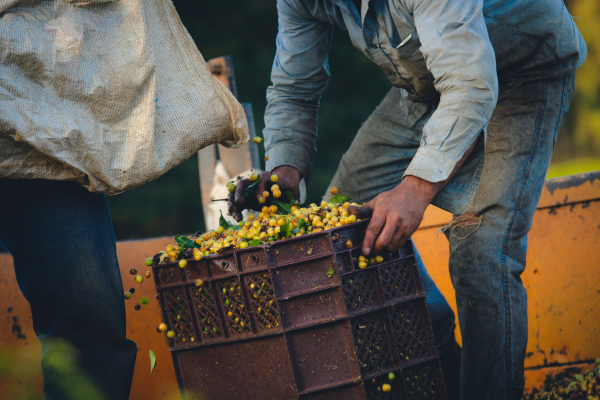The Secrets of Roasting: How the Process Transforms Coffee Beans
The Secrets of Roasting reveal an intriguing saga within the realm of coffee production, where every step holds profound significance. From the sun-kissed plantations to the sanctum of your morning ritual, embark on a journey that transcends mere preparation. Here, amidst the delicate dance of time, temperature, and technique, green beans undergo a metamorphosis, emerging as roasted gems bursting with flavor and aroma. Join us as we peel back the layers of this alchemical process, uncovering the intricate interplay that defines the essence of our beloved brew.
The Secrets of Roasting: What is Coffee Roasting?
Coffee roasting is the process of heating green coffee beans to turn them into roasted coffee beans. During roasting, beans undergo a series of complex chemical reactions that change their color, texture, density and chemical composition.
The objective of roasting is to develop the desired flavors, aromas and characteristics in coffee, creating specific roasting profiles that please connoisseurs. Roasting is a combination of science and art, with roasters carefully adjusting temperature, time and techniques to achieve the desired results.
The Secrets of Roasting: Steps of the Roasting Process
The roasting process can be divided into several distinct stages, each with its own characteristics and effects on the coffee. Let’s explore the main steps:
Preheating: In this phase, the coffee beans are gradually heated to remove the temperature and start the chemical reactions necessary for roasting.
First Rift: During this step, the grains begin to expand and release steam, which develops into a crackling sound. The coffee begins to acquire a characteristic color and aroma.
Development: In this phase, the chemical reactions continue, the coffee sugars begin to caramelize and changes in the structure of the beans occur. Roasting is interrupted at different times, depending on the desired roasting profile.
Cooling: After roasting, the beans are quickly cooled to stop chemical reactions and prevent excessive burning. Proper cooling also helps preserve the aromas and flavors enjoyed during roasting.
The Secrets of Roasting: Roasting Profiles and their Effects
Roast profiles are a fundamental part of the roasting process and have a significant impact on the coffee’s flavor, aroma and characteristics. Different roasting profiles have different results. Let’s explore some common profiles:
Light roasting: In this roasting profile, the beans are removed from the roasting process right after the first split. The resulting coffee has a lighter flavor, more pronounced acidity and brighter, fruitier characteristics.
Medium roast: In this profile, the beans are removed from the roast after adequate development, but before the onset of a darker roast. The coffee has a balance between acidity and sweetness, with softer notes of caramel and chocolate.
Dark roast: In this profile, the beans are roasted for a longer time, allowing caramelization to be facilitated to a greater extent. The resulting coffee has a more intense flavor, fuller body, lower acidity and hints of dark chocolate and spices.
Each roasting profile offers a distinct sensory experience, and the choice of roasting profile depends on the influenced individuals and the type of coffee used.
The Secrets of Roasting: Factors influencing roasting
Several factors influence the roasting process and the results obtained. Some of the main factors include:
Bean Type: Different coffee varieties have unique sensory characteristics and may respond differently to roasting. Roasters must consider bean characteristics when determining the proper roast profile.
Origin of coffee: Coffees from different regions and countries have different flavor profiles. Roasters experiment with adjusting their roasting techniques to bring out the specific characteristics of each origin.
Altitude and climate: The altitude and climatic conditions in which coffee beans are grown can also influence roasting. Grains grown at higher altitudes, for example, can have a higher density and require adjustments to the roasting process.
Batch Size: The batch size of coffee being roasted can affect heat distribution and process uniformity. Professional roasters monitor and adjust time and temperature based on batch size for consistent results.
The Secrets of Roasting: Art and Science of Roasting
Coffee roasting is a combination of art and science. Roasters use their experience, knowledge and intuition to adjust roasting parameters and create desired roast profiles. The roasting curve, which represents the temperature and time during roasting, is a fundamental tool for controlling the process.
In addition, technological advances have allowed roasters to be used with greater precision and control, offering roasters a wider range of possibilities to explore the flavors and aromas of coffee.
The Secrets of Roasting: The Importance of Control Quality in Roasting
Coffee roasting requires strict quality control to ensure the beans meet the desired standards. During the roasting process, roasters carefully monitor temperature, time and other parameters to ensure consistent, high-quality results.
In addition, quality control involves a sensory evaluation of the roasted beans. Professionals require evaluation tests to evaluate the taste, acidity, body, aroma and other sensory aspects of the coffee. This thorough assessment helps ensure that the coffee meets desired quality standards and is consistent with each batch.
Quality control is also essential for coffee traceability. Each batch of roasted beans must be traceable at its origin, allowing consumers to even have confidence in the origin and quality of the coffee they are consuming.
The Secrets of Roasting: Storage and Fresh Roasted Coffee
After roasting, roasted coffee beans must be preserved to preserve their freshness and quality. Exposure to air, moisture and light can affect the taste and aroma of coffee over time.
Roasted coffee beans should be stored in airtight containers in a cool, dry place, away from direct sunlight. Furthermore, it is recommended to consume roasted coffee within a specific period after roasting, known as the freshness window, to make the most of its sensory characteristics.
Many roasters indicate the date of roasting on coffee packages, allowing consumers to know when the coffee was roasted and to choose fresher products.
The Secrets of Roasting: Experimentation and Appreciation of Roasting Profiles
Coffee roasting offers a variety of roast profiles for coffee lovers to explore and enjoy. Each roast profile offers a unique set of flavors and aromas, allowing for a satisfying experience for consumers.
Experimenting with different roast profiles is an exciting way to discover new flavors and find personal preference. From light and vibrant roasts to dark and intense roasts, there is an understanding of options available to satisfy the most discerning palates.
Coffee connoisseurs can explore different coffee origins, brewing methods and roast profiles to create custom blends that suit their personal preferences.
Conclusion:
Roasting is a fascinating process that transforms green coffee beans into roasted coffee beans, ready to be enjoyed in a cup. Care in choosing the roast profile, quality control, proper processing and experimentation with different profiles work to play essential roles in achieving a high quality coffee beverage.
By understanding the secrets of roasting, we can appreciate even more the complexity and artistry behind a cup of coffee. Each step of the roasting process contributes to the unique flavors, aromas and characteristics of the coffee we love so much.
So the next time you enjoy a cup of coffee, take a moment to appreciate the roasted beans that are possible. Value the art of roasting and immerse yourself in the nuances of flavors and aromas that coffee has to offer.
See More: https://amoartesanato.com/





